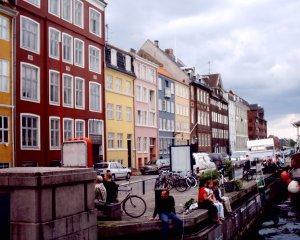
Must. Travel. There.
According to The Economist’s special report, the Scandinavian countries of Norway, Denmark, Sweden, and Finland are quickly becoming examples of how to accomplish much of what the left and the right desire. The article shows that despite their reputation for socialism, the Scandinavian nations have remade themselves since the 1990s:
The idea of lean Nordic government will come as a shock both to French leftists who dream of socialist Scandinavia and to American conservatives who fear that Barack Obama is bent on “Swedenisation”. They are out of date. In the 1970s and 1980s the Nordics were indeed tax-and-spend countries. Sweden’s public spending reached 67% of GDP in 1993. Astrid Lindgren, the inventor of Pippi Longstocking, was forced to pay more than 100% of her income in taxes. But tax-and-spend did not work: Sweden fell from being the fourth-richest country in the world in 1970 to the 14th in 1993.
Since then the Nordics have changed course—mainly to the right. Government’s share of GDP in Sweden, which has dropped by around 18 percentage points, is lower than France’s and could soon be lower than Britain’s. Taxes have been cut: the corporate rate is 22%, far lower than America’s. The Nordics have focused on balancing the books. While Mr Obama and Congress dither over entitlement reform, Sweden has reformed its pension system (see Free exchange). Its budget deficit is 0.3% of GDP; America’s is 7%.
On public services the Nordics have been similarly pragmatic. So long as public services work, they do not mind who provides them. Denmark and Norway allow private firms to run public hospitals. Sweden has a universal system of school vouchers, with private for-profit schools competing with public schools. Denmark also has vouchers—but ones that you can top up. When it comes to choice, Milton Friedman would be more at home in Stockholm than in Washington, DC.
All Western politicians claim to promote transparency and technology. The Nordics can do so with more justification than most. The performance of all schools and hospitals is measured. Governments are forced to operate in the harsh light of day: Sweden gives everyone access to official records. Politicians are vilified if they get off their bicycles and into official limousines. The home of Skype and Spotify is also a leader in e-government: you can pay your taxes with an SMS message.
This may sound like enhanced Thatcherism, but the Nordics also offer something for the progressive left by proving that it is possible to combine competitive capitalism with a large state: they employ 30% of their workforce in the public sector, compared with an OECD average of 15%. They are stout free-traders who resist the temptation to intervene even to protect iconic companies: Sweden let Saab go bankrupt and Volvo is now owned by China’s Geeley. But they also focus on the long term—most obviously through Norway’s $600 billion sovereign-wealth fund—and they look for ways to temper capitalism’s harsher effects. Denmark, for instance, has a system of “flexicurity” that makes it easier for employers to sack people but provides support and training for the unemployed, and Finland organises venture-capital networks.
These nations are, admittedly, far from perfect. Their public sectors are still too large but, as the article states:
The Nordics cluster at the top of league tables of everything from economic competitiveness to social health to happiness. They have avoided both southern Europe’s economic sclerosis and America’s extreme inequality.
That is a balancing act few nations have been able to achieve, and smart policy makers ought to look to these nations as examples.
